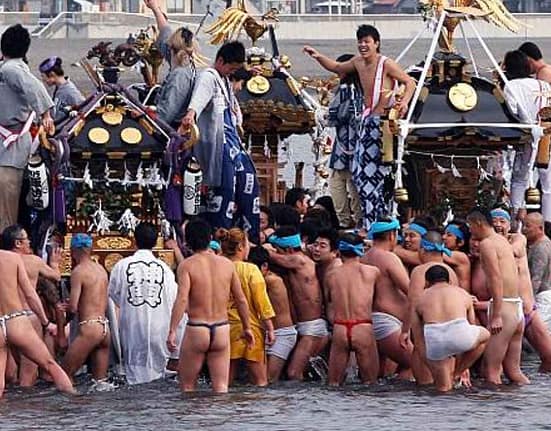The Great Wall of China is one of the most iconic structures in the world, with an amazing history that will surprise you.
We’ve put together 60 interesting facts about the Great Wall of China that reveal what makes this wall so special.
Get ready to discover some cool stories and fun facts about great wall of china that will make you see the Great Wall in a whole new light!
This blog includes:
- Facts about the History and construction of the Great Wall of China
- Historical significance facts of the Great Wall of China
- Unique features and myths surrounding the Great Wall of China
Interesting Facts About Great Wall of China

History and Construction
- Ancient Origins: The Great Wall is a series of fortifications built across northern China and southern Mongolia, with construction starting as early as the 7th century BC.
- Qin Dynasty: The first emperor of China, Qin Shi Huang, unified various wall segments into the “10,000-Li Long Wall” around 221 BC.
- Ming Dynasty: The most extensive and best-preserved sections of the Wall were built during the Ming Dynasty (1368–1644).
- Construction Duration: The Wall was built over 2,000 years by several dynasties, reflecting advancements in construction techniques and materials.
- Materials Used: The Wall was constructed using various materials, including earth, stone, wood, and bricks, with sticky rice mortar used during the Ming era.
- Length: The total length of the Great Wall is about 21,196 kilometers (13,171 miles).
- Strategic Passes: There are 15 strategic passes from the East to the West, crucial for defense.
- Watchtowers: Up to 25,000 watchtowers were constructed along the Wall for surveillance and defense.
- Labor Force: Hundreds of thousands of soldiers and conscripted workers labored on the Wall, with many losing their lives during construction.
- Construction Techniques: Early builders used the natural terrain to their advantage, constructing walls on high mountains for defense.

Cultural Significance of Great Wall of China
- Cultural Icon: The Great Wall is considered the greatest cultural icon of China, symbolizing strength and endurance.
- UNESCO World Heritage Site: The Wall was designated a UNESCO World Heritage site in 1987.
- Symbolism: It serves as a powerful symbol of Chinese civilization’s enduring strength and a psychological barrier against foreign influences.
- Legends and Myths: The Wall is associated with many legends, including the tale of Lady Mengjiang, whose tears caused a section of the Wall to collapse.
- Names: The Wall has had various names in Chinese and English, with “Long Wall” being a common term.
- Myths Debunked: Contrary to popular belief, the Wall cannot be seen from the Moon.
- Cultural Stories: Many beautiful legends and stories have been passed down through generations about the Wall.
- Tourism: The Wall attracts millions of tourists each year, with sections like Badaling being particularly popular.
- Artistic Inspiration: The Wall has inspired countless works of art, literature, and film, reflecting its cultural impact.
- National Pride: The Wall is a source of national pride for the Chinese people, representing their historical achievements.

Geography and Structure of Great Wall of China
- Geographical Span: The Wall stretches from the Jiayuguan Pass in the west to the Shanhaiguan Pass in the east.
- Terrain: It winds across deserts, grasslands, mountains, and plateaus, showcasing diverse landscapes.
- Sections: The Wall consists of numerous sections, some well-preserved and others in ruins.
- Natural Defense: The Wall was constructed along the Himalayan Mountain Range, providing a natural defense.
- Materials in Desert Areas: In desert regions, gravel and native plants were used to create strong building materials.
- Stone Walls: Some areas were initially built without mortar but later reinforced to prevent plant growth.
- Ming Construction: The Ming walls were built with granite, limestone, and marble, standing about 25 feet high.
- Kiln-Fired Bricks: Large bricks, about four times the size of modern bricks, were used during the Ming era.
- Disrepair: Many sections of the Wall are in disrepair, with 22% of the Ming Wall having disappeared.
- Visibility from Space: The Wall is barely visible from low Earth orbit and not more conspicuous than other human-made structures.
Fun facts about great wall of china

Military and Defense
- Defensive Purpose: Originally built to defend against invasions, the Wall has been breached many times throughout history.
- Qin Shi Huang’s Vision: The Wall was conceived by Emperor Qin Shi Huang to prevent incursions from nomadic groups.
- Ming Defense: The Wall helped defend against the Manchu invasions during the Ming Dynasty.
- Military Strategy: The Wall served as a military defense line, with watchtowers for communication and surveillance.
- Border Control: Apart from defense, the Wall was used for border control, trade regulation, and immigration management.
- Mongol Invasions: The Wall was breached 14 times by the Mongolian army between 1501 and 1529.
- Qing Dynasty: Under Qing rule, the Wall’s construction was discontinued as China’s borders extended beyond it.
- Military Labor: Soldiers and convicts were conscripted to work on the Wall, highlighting its military importance.
- Strategic Importance: The Wall’s strategic passes were crucial for controlling movement and trade along the Silk Road.
- Symbol of Defense: Despite its breaches, the Wall remains a symbol of China’s historical military strength.
Modern-Day Relevance

- Tourist Attraction: The Wall is one of the most visited tourist attractions in the world, drawing millions of visitors annually.
- Cultural Heritage: It is recognized as one of the seven construction wonders of the world for its architectural grandeur.
- Preservation Efforts: Efforts are ongoing to preserve and restore sections of the Wall, especially those near tourist centers.
- Educational Value: The Wall serves as an educational site, teaching visitors about China’s history and culture.
- Economic Impact: Tourism related to the Wall contributes significantly to the local economy.
- Cultural Exchange: The Wall facilitates cultural exchange, attracting visitors from around the globe.
- Symbol of Unity: The Wall symbolizes the unity and strength of the Chinese people throughout history.
- Architectural Feat: It is considered one of the most impressive architectural feats in human history.
- Global Recognition: The Wall is globally recognized as a symbol of China’s rich cultural heritage.
- Inspiration for Future Generations: The Wall continues to inspire future generations with its historical significance and architectural marvel.
Lesser-Known Facts about Great Wall of China

- Not a Single Wall: The Wall is not a single continuous structure but a series of walls built by various dynasties.
- Different Names: The Wall has been known by different names throughout history, reflecting its evolving significance.
- Human Cost: The Wall is sometimes referred to as the longest cemetery on Earth due to the high number of worker deaths during construction.
- Natural Materials: In some areas, natural materials like tamarisk plants were used to strengthen the Wall.
- Rice Mortar: Sticky rice mortar was used during the Ming era to hold bricks together, showcasing innovative construction techniques.
- Un-touristy Areas: Regions like Huangyaguan offer a quieter, less touristy experience with stunning views.
- Weather Considerations: Visitors are advised to consider the weather, as summers can be extremely hot.
- Safety Tips: Appropriate footwear and hydration are essential for walking on the Wall.
- Souvenirs: Visitors are encouraged to carry cash for purchasing souvenirs at the Wall.
- Cultural Events: The Wall hosts events like the Great Wall Marathon, attracting participants from around the world.

Key Dates and Information about Great Wall of China
Date/Period | Event/Fact | Important Person(s) |
|---|---|---|
7th Century BCE | Initial fortifications built by various states during the Spring and Autumn Period. | Various local princes |
221-206 BCE | Qin Shi Huang connects existing walls, marking the beginning of efforts to build the Great Wall. | Qin Shi Huang (First Emperor) |
206 BCE – 220 CE | Han Dynasty extends the wall further west, reaching areas like Gansu. | Han emperors |
1368-1644 | Major rebuilding and expansion of the wall occurs during the Ming Dynasty, particularly near Beijing. | Zhu Yuanzhang (Ming founder) |
1644 | The Great Wall is breached at Shanhai Pass, leading to the end of Ming rule. | Wu Sangui (Ming general) |
1957 | The Mutianyu section is restored and opened to the public as a tourist attraction, part of the wall totaling 573 kilometers in Beijing. | Government of PRC |
Quiz: About The Great Wall of China
Here’s a set of quiz questions with five questions from the Great Wall of China facts, along with the answers provided at the end. This is just to test what you learned or remember.
Question Number | Question | Options |
|---|---|---|
1 | When did the construction of the Great Wall begin? | A) 221 BC B) 7th century BC C) 1368 AD D) 1644 AD |
2 | Which dynasty is known for building the most extensive and best-preserved sections of the Great Wall? | A) Qin Dynasty B) Han Dynasty C) Ming Dynasty D) Qing Dynasty |
3 | What material was famously used during the Ming era to hold bricks together? | A) Cement B) Sticky rice mortar C) Clay D) Sand |
4 | In what year was the Great Wall designated a UNESCO World Heritage site? | A) 1975 B) 1987 C) 1990 D) 2000 |
5 | What was one of the primary purposes of the Great Wall? | A) To serve as a trade route B) To defend against invasions C) To connect different cities D) As a cultural landmark |
Answers:
- B) 7th century BC
- C) Ming Dynasty
- B) Sticky rice mortar
- B) 1987
- B) To defend against invasions
In wrapping up, the Great Wall of China isn’t just a cool landmark; it’s an amazing story of human creativity and strength! We hope these 60 interesting facts about Great Wall of China have sparked your curiosity and made you appreciate this incredible structure even more. At Complete Facts Online, we love sharing fascinating stories like this one, and we’d love to hear your thoughts too!
Feel free to reach out or leave a comment below. What fact surprised you the most? Thanks for joining us on this adventure into history!









